Brake Pressure Modulator Valve Replacement Without RPO LAT
Caution: Refer to Brake Fluid Irritant Caution in the Preface section.
Notice: Refer to Brake Fluid Effects on Paint and Electrical Components Notice in the Preface section.
Notice: Always connect or disconnect the wiring harness connector from the EBCM/EBTCM with the ignition switch in the OFF position. Failure to observe this precaution could result in damage to the EBCM/EBTCM.
Removal Procedure
- Turn the ignition switch to the OFF position.
- Clean the brake pressure modulator valve (BPMV) pipe fitting areas of any accumulated dirt and foreign material.
- Disconnect the electrical connector from the electronic brake control module (EBCM).
- Place a shop towel under the BPMV to catch any brake fluid loss.
- Disconnect the RF brake pipe fitting (1).
- Disconnect the LR brake pipe fitting (1).
- Disconnect the RR brake pipe fitting (1).
- Disconnect the LF brake pipe fitting (1).
- Disconnect the master cylinder primary brake pipe fitting (1).
- Disconnect the master cylinder secondary brake pipe fitting (1).
- Raise and support the vehicle. Refer to Lifting and Jacking the Vehicle .
- Remove the left front tire and wheel assembly. Refer to Tire and Wheel Removal and Installation .
- Remove the 3 BPMV bracket nuts (1).
- Remove the BPMV and bracket assembly.
- Remove the BPMV bolt (1).
- Remove the BPMV from the bracket (1).
- Inspect the BPMV bracket insulator for damage and replace, if necessary.
- If installing a new BPMV, remove the EBCM. Refer to Electronic Brake Control Module Replacement .

Cap the brake pipe fitting and plug the BPMV outlet port to prevent brake fluid loss and contamination.
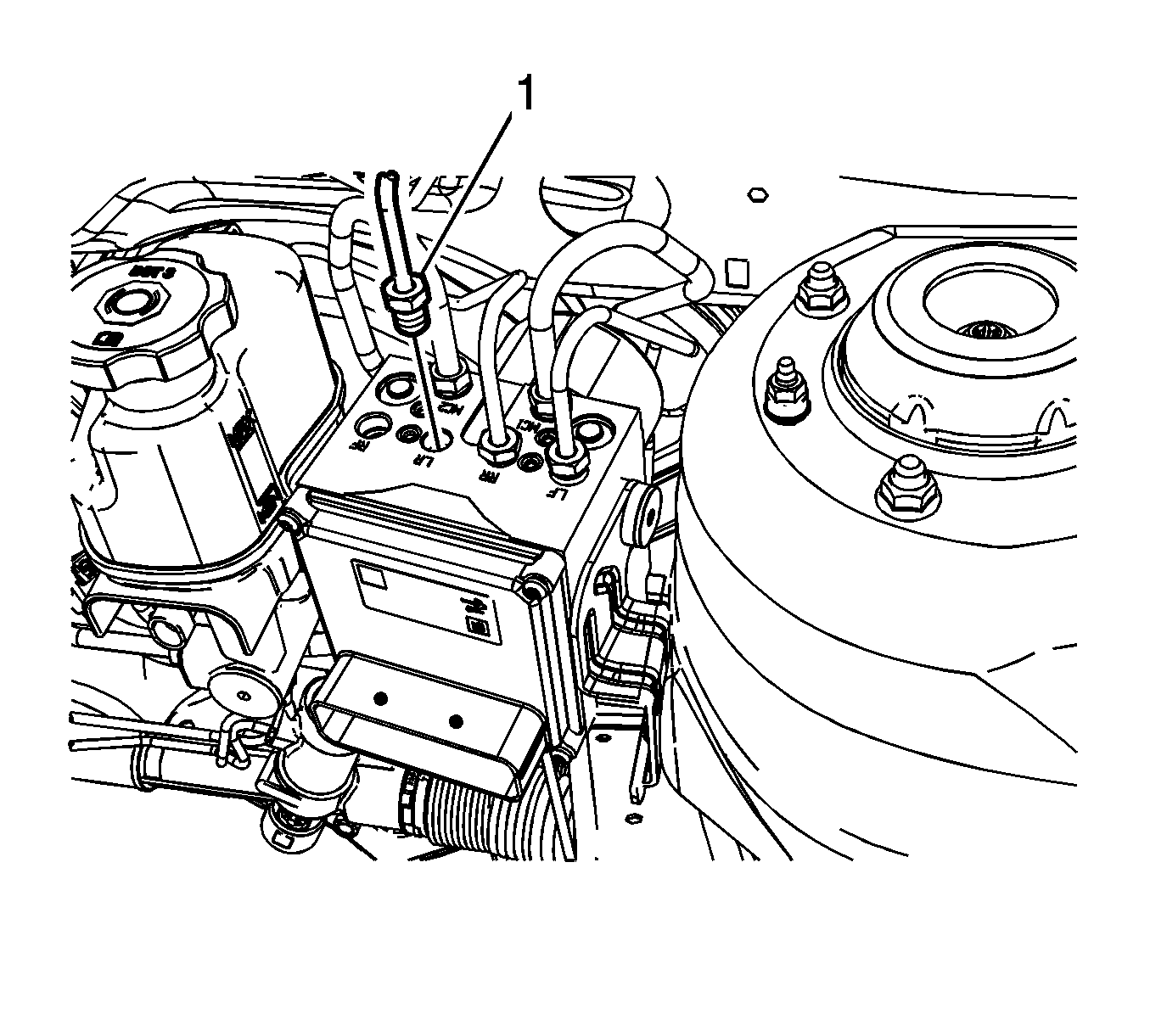
Cap the brake pipe fitting and plug the BPMV outlet port to prevent brake fluid loss and contamination.

Cap the brake pipe fitting and plug the BPMV outlet port to prevent brake fluid loss and contamination.
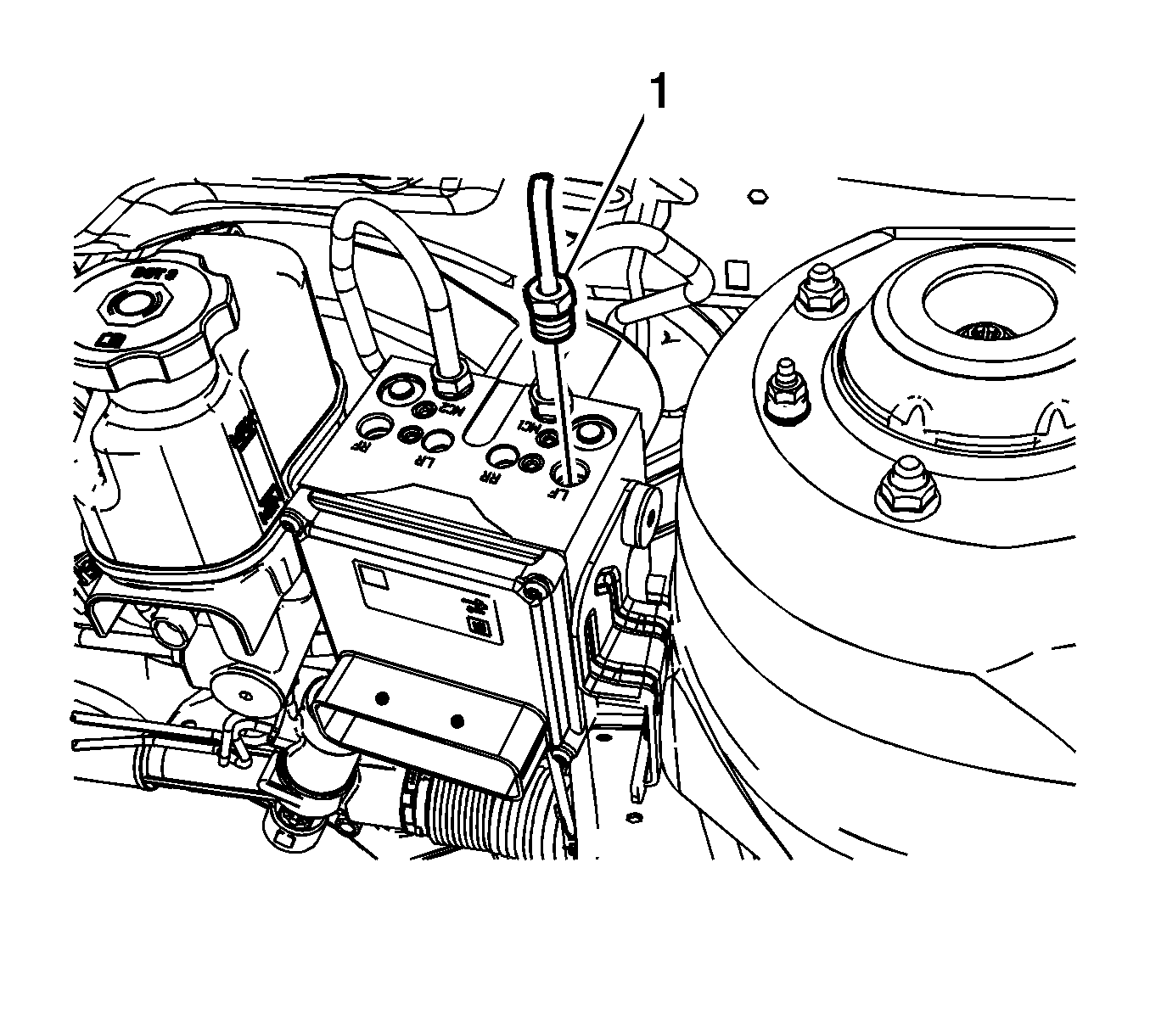
Cap the brake pipe fitting and plug the BPMV outlet port to prevent brake fluid loss and contamination.

Cap the brake pipe fitting and plug the BPMV inlet port to prevent brake fluid loss and contamination.
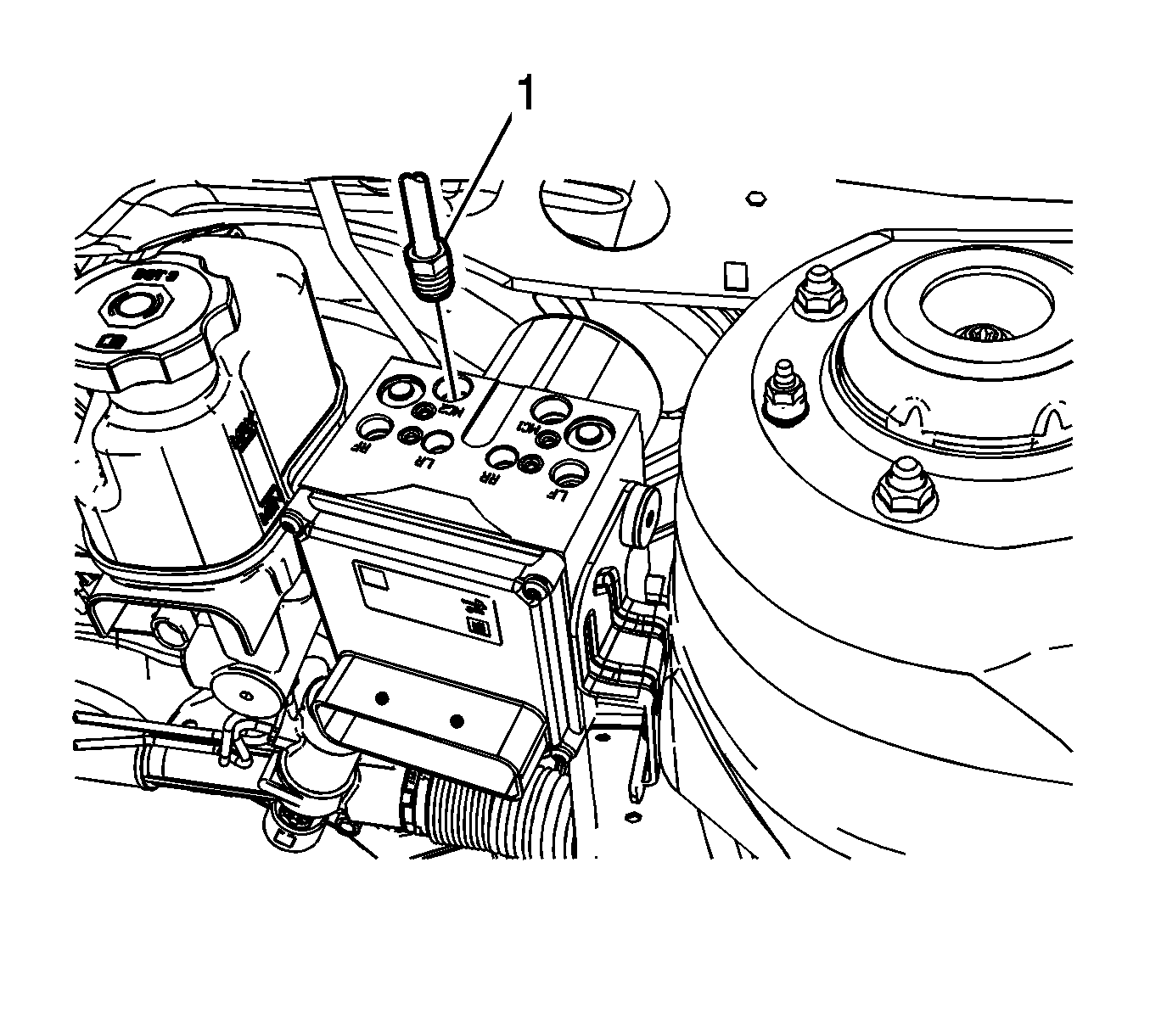
Cap the brake pipe fitting and plug the BPMV inlet port to prevent brake fluid loss and contamination.

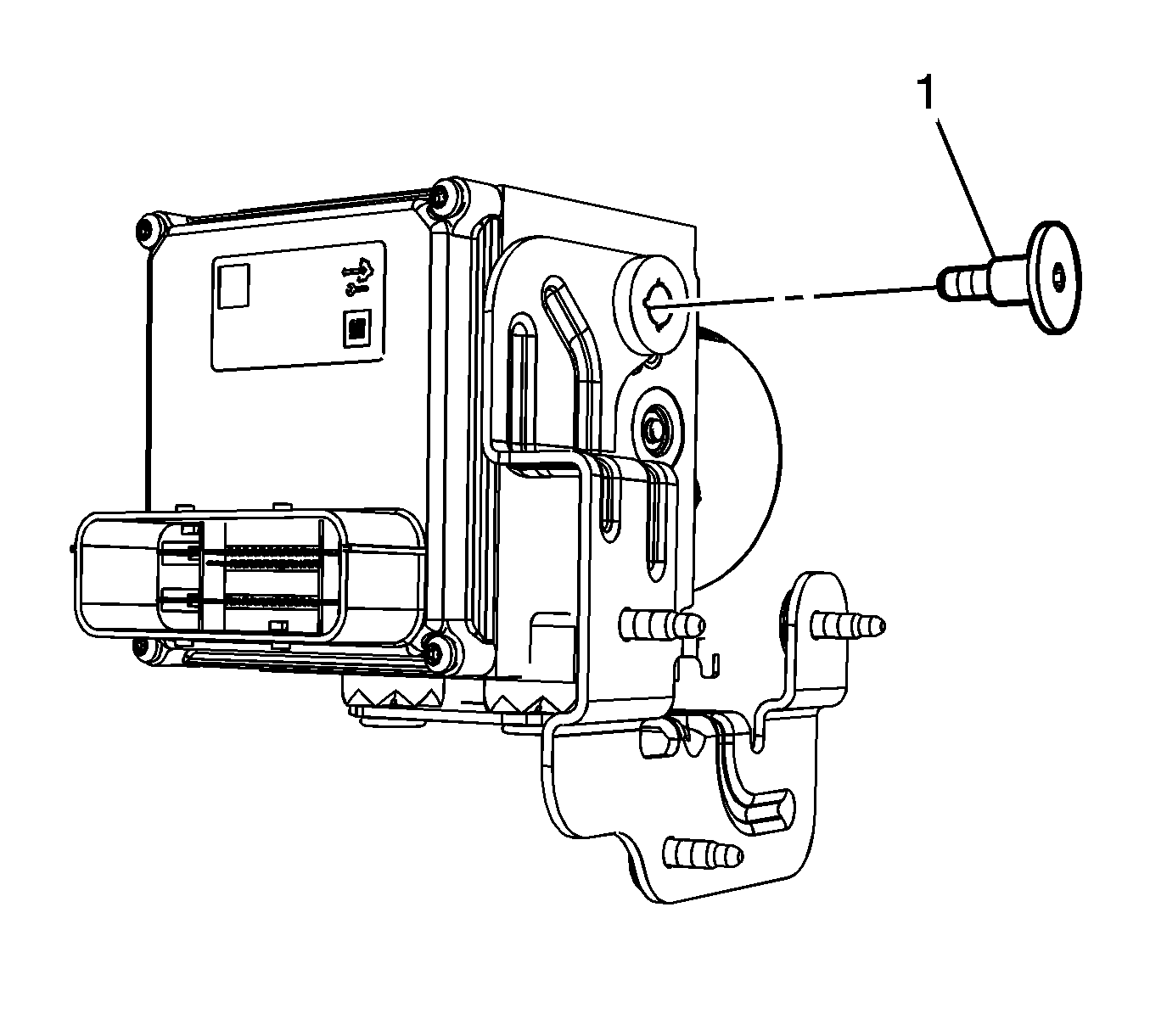
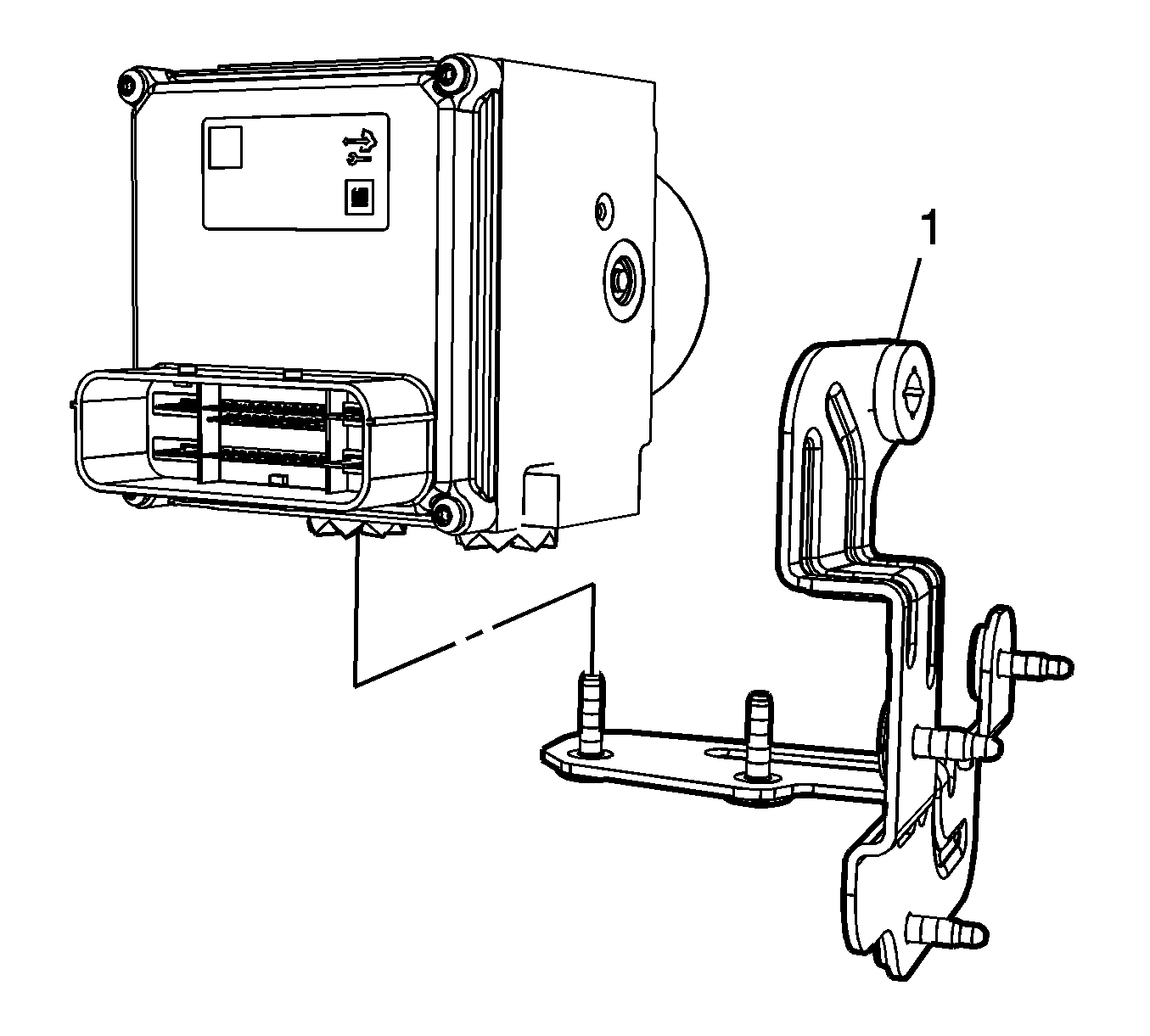
Installation Procedure
Important: When installing a new BPMV, do NOT remove the shipping plugs from the pipe ports until after installation into the vehicle.
- Install the EBCM, if removed. Refer to Electronic Brake Control Module Replacement .
- Install the BPMV to the bracket (1).
- Install the BPMV bolt (1).
- Install the BPMV and bracket assembly.
- Install the 3 BPMV bracket nuts (1).
- Install the left front tire and wheel assembly. Refer to Tire and Wheel Removal and Installation .
- Connect the master cylinder secondary brake pipe fitting (1).
- Connect the master cylinder primary brake pipe fitting (1).
- Connect the LF brake pipe fitting (1).
- Connect the RR brake pipe fitting (1).
- Connect the LR brake pipe fitting (1).
- Connect the RF brake pipe fitting (1).
- Connect the EBCM electrical connector.
- Bleed the hydraulic brake system. Refer to Hydraulic Brake System Bleeding .
- Perform the Diagnostic System Check - Vehicle .
- Observe the feel of the brake pedal after performing the diagnostic system check. If the pedal now feels spongy, air may have been in the secondary circuit of the brake modulator assembly, which may have been introduced into the primary circuit. If the pedal feels spongy, perform the Antilock Brake System Automated Bleed Procedure .

Notice: Refer to Fastener Notice in the Preface section.

Tighten
Tighten the bolt to 10 N·m (89 lb in).

Tighten
Tighten the nuts to 10 N·m (89 lb in).

Tighten
Tighten the fitting to 20 N·m (15 lb ft).

Tighten
Tighten the fitting to 20 N·m (15 lb ft).

Tighten
Tighten the fitting to 20 N·m (15 lb ft).

Tighten
Tighten the fitting to 20 N·m (15 lb ft).

Tighten
Tighten the fitting to 20 N·m (15 lb ft).

Tighten
Tighten the fitting to 20 N·m (15 lb ft).
Important: Ensure the electrical connector is correctly inserted into the EBCM prior to placing the locking lever into position. Failure to make a proper connection may cause communication problems with the module.
Important: Place the ignition switch in the ON position. Do not start the engine.
Brake Pressure Modulator Valve Replacement With RPO LAT
Caution: Refer to Brake Fluid Irritant Caution in the Preface section.
Notice: Refer to Brake Fluid Effects on Paint and Electrical Components Notice in the Preface section.
Notice: Always connect or disconnect the wiring harness connector from the EBCM/EBTCM with the ignition switch in the OFF position. Failure to observe this precaution could result in damage to the EBCM/EBTCM.
Removal Procedure
- Turn the ignition switch to the OFF position.
- Clean the brake pressure modulator valve (BPMV) pipe fitting areas of any accumulated dirt and foreign material.
- Disconnect the electrical connector from the electronic brake control module (EBCM).
- Place a shop towel under the BPMV to catch any brake fluid loss.
- Disconnect the brake pressure sensor electrical connector.
- Disconnect the master cylinder brake pipe fittings (1).
- Disconnect the BPMV outlet brake pipe fittings (2).
- Remove the 4 BPMV bolts.
- Remove the BPMV from the bracket.
- If installing a new BPMV, remove the EBCM. Refer to Electronic Brake Control Module Replacement.
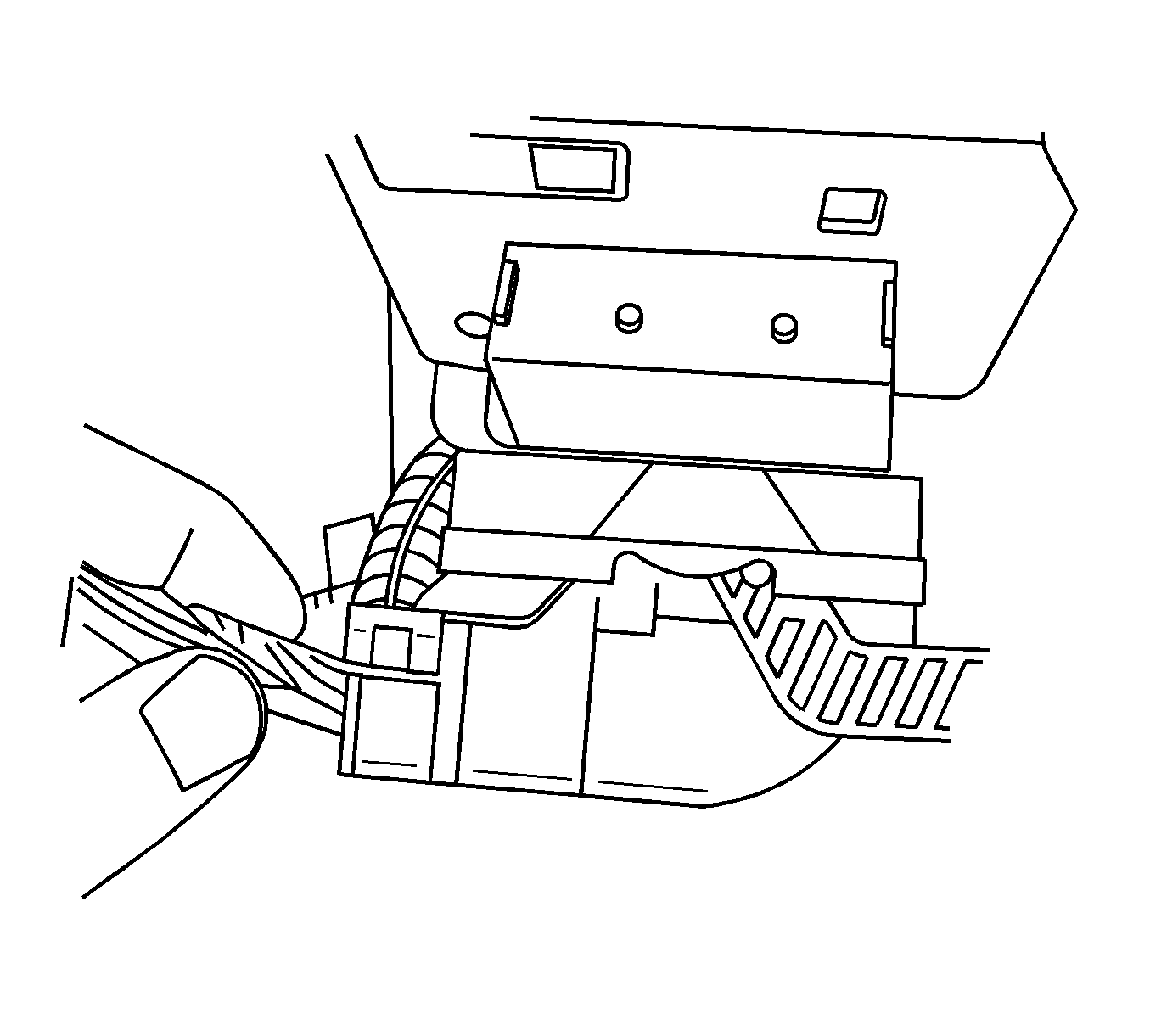
Important: Note the location of the brake pipes to aid installation.
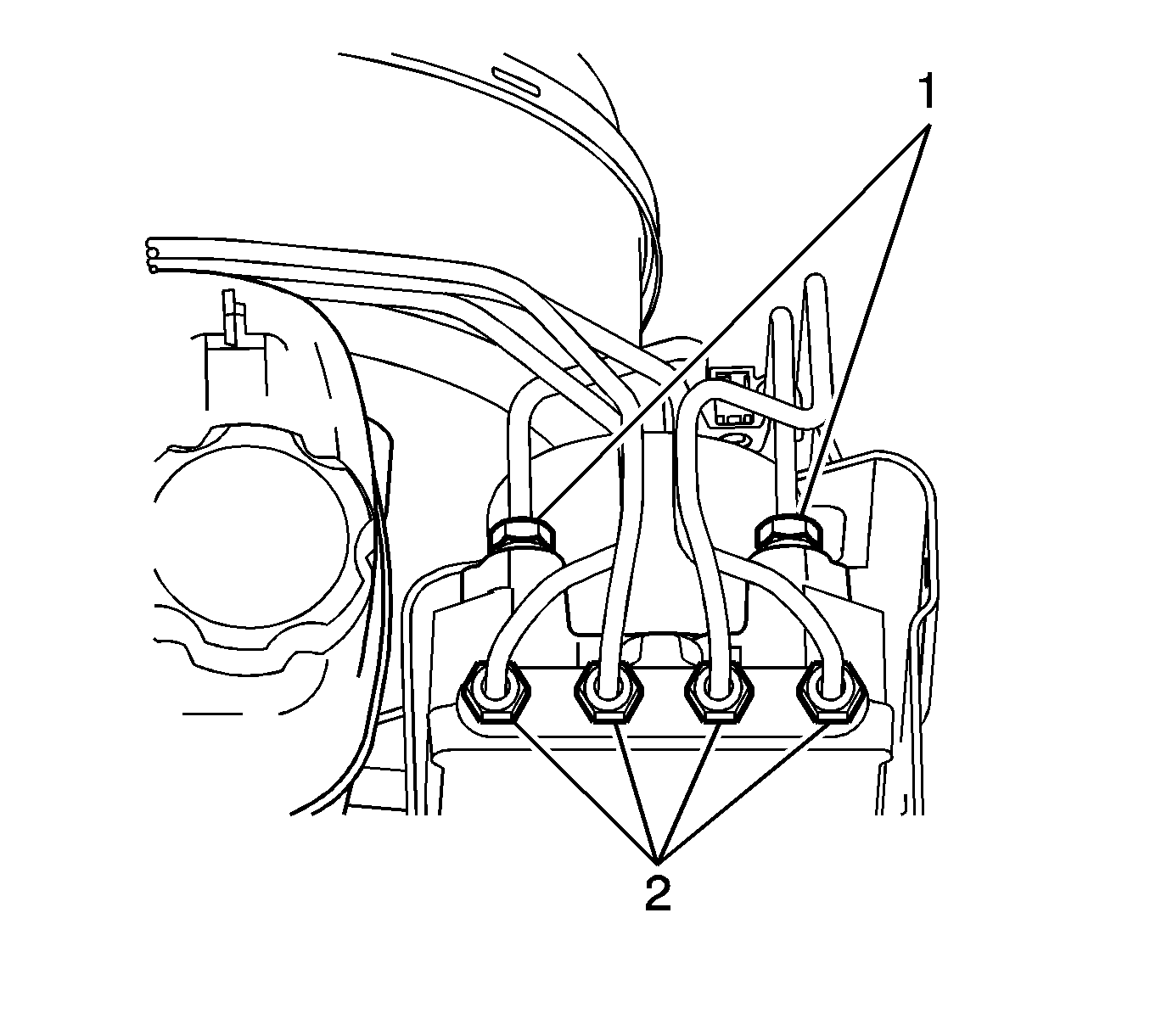
Cap the brake pipe fittings and plug the BPMV inlet ports to prevent brake fluid loss and contamination.
Cap the brake pipe fittings and plug the BPMV outlet ports to prevent brake fluid loss and contamination.

Installation Procedure
Important: When installing a new BPMV, do NOT remove the shipping plugs from the pipe ports until after installation into the vehicle.
- Install the EBCM, if removed. Refer to Electronic Brake Control Module Replacement.
- Install the BPMV to the bracket (1).
- Install the BPMV bolts.
- Connect the master cylinder brake pipe fittings (1).
- Connect the BPMV outlet brake pipe fittings (2).
- Connect the EBCM electrical connector.
- Bleed the hydraulic brake system. Refer to Hydraulic Brake System Bleeding.
- Perform the Diagnostic System Check - Vehicle.
- Observe the feel of the brake pedal after performing the diagnostic system check. If the pedal now feels spongy, air may have been in the secondary circuit of the brake modulator assembly, which may have been introduced into the primary circuit. If the pedal feels spongy, perform the Antilock Brake System Automated Bleed Procedure.

Notice: Refer to Fastener Notice in the Preface section.
Tighten
Tighten the bolts to 10 N·m (89 lb in).
Important: Note the location of the brake pipes to aid installation.

Tighten
Tighten the fittings to 20 N·m (15 lb ft).
Tighten
Tighten the fittings to 20 N·m (15 lb ft).

Important: Ensure the electrical connector is correctly inserted into the EBCM prior to placing the locking lever into position. Failure to make a proper connection may cause communication problems with the module.
Important: Place the ignition switch in the ON position. Do not start the engine.
